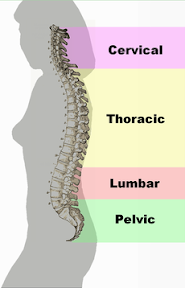 Here is an excerpt from a recent review article in the official AFP journal American Family Physician:
Here is an excerpt from a recent review article in the official AFP journal American Family Physician:Acute low back pain is one of the most common reasons for adults to see a physician. Most patients recover quickly with minimal treatment.
"Red flags"
Serious "red flags" include:
- significant trauma related to age (i.e., injury related to a fall from a height or motor vehicle crash in a young patient, or from a minor fall or heavy lifting in a patient with osteoporosis or possible osteoporosis)
- major or progressive motor or sensory deficit
- new-onset bowel or bladder incontinence or urinary retention
- loss of anal sphincter tone
- saddle anesthesia
- history of cancer metastatic to bone
- suspected spinal infection
Diagnosis
Without signs of serious pathology, imaging and laboratory testing often are not required.
Treatment
Patient education, nonsteroidal anti-inflammatory drugs (NSAIDs), acetaminophen, and muscle relaxants are beneficial.
Bed rest should be avoided, if possible.
Exercises directed by a physical therapist, such as the McKenzie method and spine stabilization exercises, may decrease recurrent pain.
Spinal manipulation and chiropractic techniques are no more effective than established medical treatments.
No substantial benefit has been shown with:
- oral steroids
- acupuncture
- massage
- traction
- lumbar supports
- regular exercise programs
References:
Diagnosis and treatment of acute low back pain. Casazza BA. Am Fam Physician. 2012 Feb 15;85(4):343-50.
Image source: Different regions (curvatures) of the vertebral column, Wikipedia, public domain.

